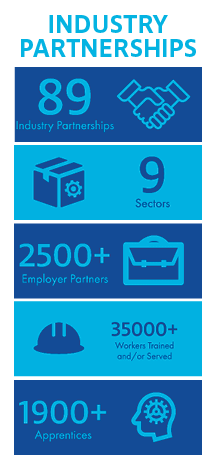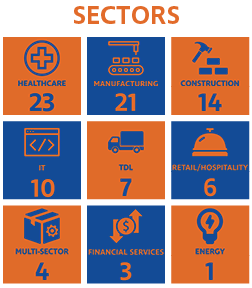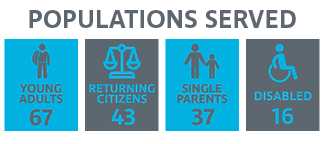 Industry Partnerships are at the heart of the National Fund’s model. They are the way our network activates employers to adopt policies and practices that make jobs better and systems work more efficiently. Industry partnerships align resources to more effectively address industry workforce needs and other regional economic development challenges.
Industry Partnerships are at the heart of the National Fund’s model. They are the way our network activates employers to adopt policies and practices that make jobs better and systems work more efficiently. Industry partnerships align resources to more effectively address industry workforce needs and other regional economic development challenges.
Employers are at the heart of these partnerships, but educational institutions, labor organizations, and community organizations play critical supporting roles. Since 2007, the National Fund’s network of regional collaboratives has created or supported more than 200 industry partnerships, engaging over 8000 employers.
Every year, we collect information from our regional collaboratives on the industry partnerships that they support. In 2018, the network supported 89 industry partnerships, covering 9 sectors.
From healthcare to construction, financial services to hospitality, industry partnerships in the National Fund network serve employers and workers in many different industries. We are always looking for new opportunities to expand sectors of industry partnerships, all it takes is a group of committed employers and a third party facilitator to make it happen.
But industry partnerships don’t happen overnight. They take hard work and dedication from employers and workforce professionals. More than 75% of the National Fund’s industry partnerships are either mature or in the growth phase, but many are just getting started on their journey. Wherever they are on the path, industry partnerships are setting out to serve both employers and workers to meet the labor needs of their region.
In 2018 alone, over 35,000 workers were trained or served by industry partnerships. With a tight labor market, many industry partnerships are focused on bringing more people into their regional economies by targeting certain populations, such as people returning from incarceration, immigrants, veterans, young adults, and more. By focusing on these populations, employers in the region have access a whole new pool of workers they may have previously overlooked. They fill their jobs, and more workers find gainful employment. It’s a win-win.




